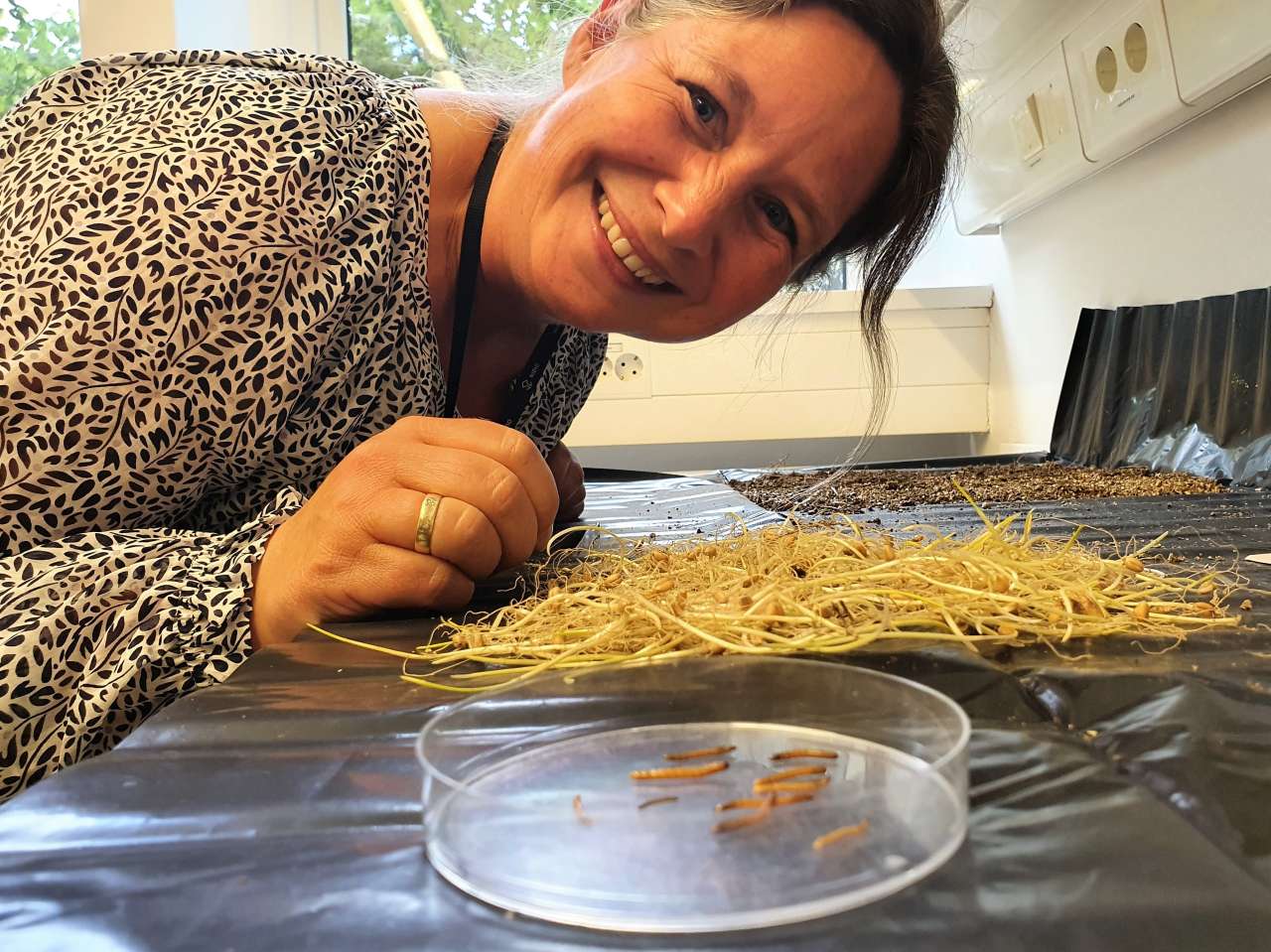Yellow larvae in potato crops reduce yields

Photo: Siri Elise Dybdal
Potato crop loss caused by wireworms is on the rise in Norway and abroad. But there are few good strategies to fight the pest. New research will provide more knowledge.
Wireworms are the larvae of the click beetle. They feed on the roots, stems and tubers of potatoes and other root crops. Wireworms reduce yield and quality by creating holes, tunnels, surface damage and scarring. They can also damage grain crops.
In recent years, potato crop loss caused by wireworms has increased in several European countries, including Norway. But how many and what types of species are causing damage here in Norway is not clear. Nor do we have adequate strategies for fighting this problematic pest. Until the 1990s, wireworms were primarily controlled using synthetic insecticides. Most of these are now prohibited.
Annette Folkedal Schjøll, researcher at NIBIO, is now leading a research project to identify and obtain information about wireworms, with the goal of improving monitoring and finding new methods of combating them.
The project collects larvae and mature beetles to show what kinds of species are present and how large their populations are.
“So far, we are seeing that there are more species and different species than we initially thought. We have also shown that they are causing harm,” she explains.
This means that the situation is slightly different from what the researchers thought – there are other species causing damage and whose life cycle they are not familiar with. But they know that there can be substantial variation. This can have a bearing on how the wireworm problem should be handled.
She says that they have also received an increasing number of inquiries about wireworms in grain:
“Damage to grain often goes under the radar; people think it is caused by nematodes or poor germination. But if you dig a little in the soil, you find wireworm larvae” the researcher says.

